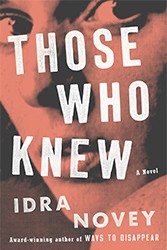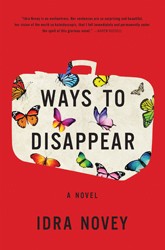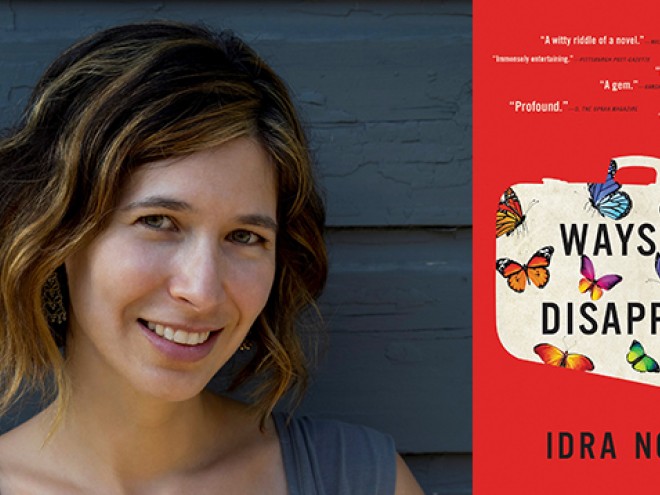
Celebrate Jewish Book Month with #30days30authors! JBC invited an author to share thoughts on #JewLit for each day of Jewish Book Month. Watch, read, enjoy, and discover!
Today, Idra Novey, the author of the Sami Rohr Prize winning novel Ways to Disappear, shares the view from Kafka’s window, and the impact that his Judaism had on his writing —and on her own as well.
Like many Americans, my first introduction to Kafka was in high school with what he referred to as his “bug piece,” The Metamorphosis. My husband, who grew up in Chile, was introduced to Kafka via The Metamorphsis as well. In both Chile and in my public high school in rural Pennsylvania, our teachers gave us numerous biographical facts we were expected to regurgitate for an upcoming quiz.
Yet amid all this grade school emphasis on biography, neither of our teachers ever mentioned Kafka’s family was Jewish. It was not until I came home and shared my astonishment about the “bug piece” with my father that I learned this life-altering writer named Franz had gone to Hebrew school as well, and had also grown up feeling acutely, continually aware, as I did in rural Pennsylvania, that he would always be seen as an outsider.
Several years later, in my literature classes at Barnard College, and on my own, I read more about the impact Judaism had on Kafka’s worldview and his sensibility as a writer. While living in Chile, and later in Brazil and translating novelists from Spanish and Portuguese, I became increasingly interested in Kafka’s theories about outsider writers in minor languages as the ones most likely to “indicate breaking points” in literature and push fiction in new directions. This certainly seemed true of the Brazilian Jewish writer Clarice Lispector, and I returned to Kafka’s theories while translating one of her novels.
Both Kafka and Lispector became significant influences on my own writing, and on the outsider Brazilian Jewish author I invented in my first novel, Ways to Disappear, all of which contributed to my eagerness to visit Prague and see Kafka’s childhood home along the Vltava River for myself.
This past summer, after the extraordinary gift of receiving the JBC’s Sami Rohr Prize, I finally made that pilgrimage. As my husband and I moved through the exhibit about the influence of the Yiddish theater on Kafka’s writing, and how often Judaism came up in his fraught relationship with his religious father, we were both surprised at what a Jewish-infused version of Kafka’s life the museum presented.
To have a chance to view Prague through Kafka’s windows was exhilarating and the museum does an extraordinary job of recreating a sense of coming closer to the untouchable, unknowable aspects that shape the sensibility of a writer. Touring the exhibits, I kept thinking about one of my favorite, lesser-known Kafka stories about an untouchable animal that lives in a synagogue.
Written in 1920, it is a wry tale whose humor didn’t really come alive in English until Michael Hoffman’s excellent new translations of Kafka’s short fiction, Investigations of a Dog. The synagogue where the untouchable long-necked animal has chosen to live is a tiny one, and the synagogue’s population is shrinking by the year. The Jewish community is having a hard time finding the funds to keep up the building. The description brought to mind the increasingly empty synagogue my parents belonged to in Pennsylvania and also the one I’d come to know in Vina del Mar, Chile with my father-in-law — those ever-emptier synagogues that exist in places where teachers will make a case for reading Kafka by leaving out any mention of his love of Yiddish theater, or of his strange story about the long-necked, untouchable animal in a synagogue who comes to know three generations of Jews, more and more of whom have moved away from the tiny town where they grew tired of being continually perceived as outsiders.
Idra Novey is the author of the novel Ways to Disappear, winner of the Sami Rohr Prize, the Brooklyn Eagles Prize, and a finalist for the Los Angeles Times Book Prize for First Fiction. Her work has been translated into ten languages and she’s written for the New York Times, the Los Angeles Times, and the Paris Review. She’s translated four books from Spanish and Portuguese, most recently Clarice Lispector’s novel The Passion According to G.H. She is currently the Writer-in-Residence in NYU’s Stella Adler Studio of Acting.



